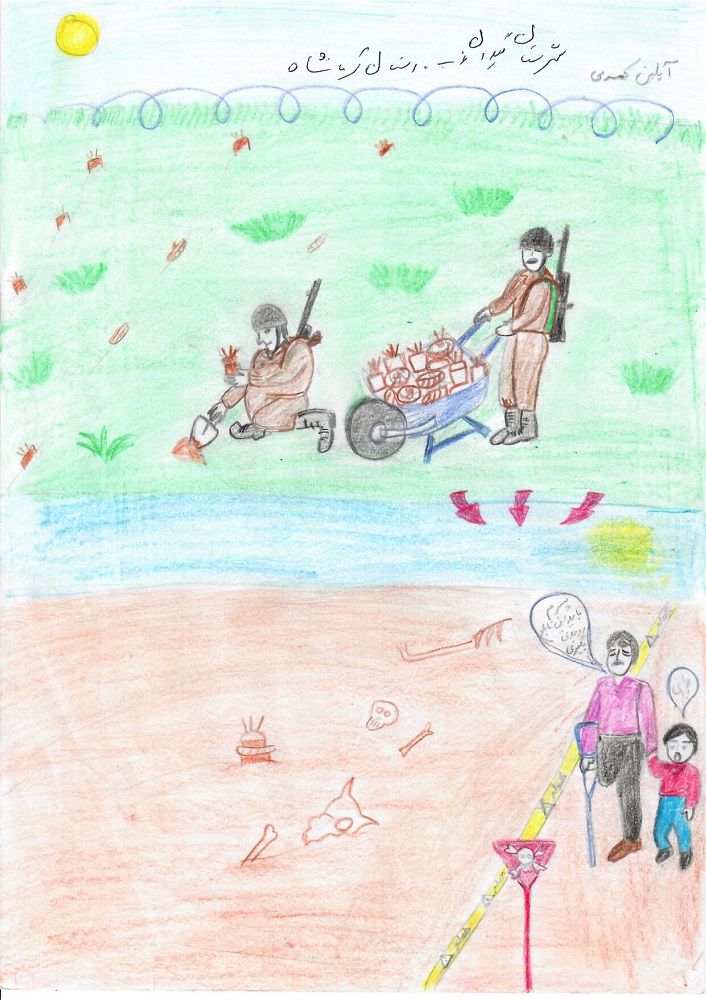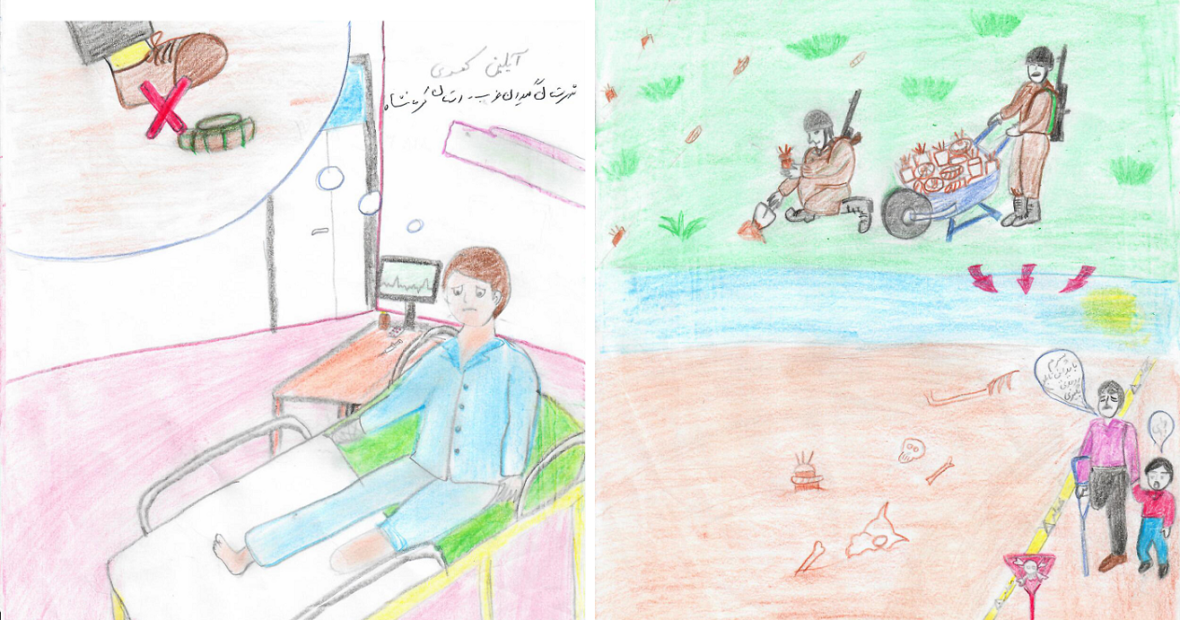The eight-year Iran-Iraq war ended in 1988 yet the aftermath of war is still there. In Iran’s western provinces live children who were not yet born during the war but know what war sounds like quite well. These children know nothing about the reason for war but know well how it could affect people’s lives. They have seen a father who has lost body organs for stepping on a mine, a young person who cannot walk because of amputation, and a teenager who has lost eyes.
Apart from their lessons at school, the children of this land need to learn another lesson, i.e. ‘mine and unexploded ordnance risk awareness’! In Iran’s western provinces, there are still areas contaminated by unexploded ordnance. That is the reason why the institutions concerned including the International Committee of the Red Cross and the Iranian Red Crescent Society extensively run awareness-raising programs titled ‘Mine Risk Awareness and Safer Behavior’ in these areas. Aimed at raising awareness of the risks of weapon contamination among different social strata in the area, these courses are held in schools, educational centers, neighborhood mosques, and other public places.
Aylin is an eight-year-old student from Gilan-e Gharb, Kermanshah Province. She took part in a drawing competition organized by Iranian Red Crescent Society after attending one of these awareness-raising programs at school. The following are his drawings:

Aylin has learned what risks playing around areas contaminated by mines and unexploded ordnance can entail.

She now knows well that one should not get close to areas marked by (mine) danger signs and that there are experts who work on clearing the areas.
In 2005, the UN General Assembly declared that April 4 of each year would be the International Day for Mine Awareness and Assistance in Mine Action.
The ICRC collects and analyzes data and studies at an international level and in some cases takes action to ensure safe humanitarian assistance operations. The Committee also conducts activities regarding risk reduction and risk awareness. Moreover, victims of landmines and unexploded remnants of war benefit from physical rehabilitation, surgical care, and economic security provided by the ICRC.
The ICRC plays a vital role in reducing harm for civilians, making communities safer, and providing humanitarian access. Humanitarian demining, which ICRC supports, can function as an important trust-building measure in the process to build peace.
Over the last 40 years and through building up national capacities and providing direct support for rehabilitation services, ICRC’s physical rehabilitation program has supported about two million people with disabilities including survivors of accidents involving mines, cluster ordnance, and explosive remnants of war in more than 50 countries across the world.
Demining in Iran
In the aftermath of the Iran-Iraq war in the 1980s, Iran is affected by the consequences of contamination from weapons such as mines and explosive remnants of war.
Most weapon-contaminated areas of the country are located in the five western provinces of West Azerbaijan, Ilam, Kurdistan, Kermanshah, and Khuzestan.
Mine sweeping operations have been conducted by Iran’s government for years, due to which contamination has been significantly reduced. However, mines and explosive remnants of war are still a great threat for the civilian population in these areas.
Last year, virtual awareness-raising (through social media, TV channels, radio, etc.) went on like the previous years in the western provinces that participated in the joint Risk Awareness and Safer Behavior program with 366,540 members of local networks in social media having benefited from the programs. In addition, 74,662 individuals in Azerbaijan, Kurdistan, Kermanshah, Khuzestan, and Ilam benefited from in-person awareness courses. Furthermore, risk awareness of mines and explosive ordnance was conducted for 64,764 Arbaeen pilgrims crossing the Iran-Iraq border.
Despite restrictions caused by the Coronavirus pandemic, in the Iran-Afghanistan border (Mine Risk Education Centre of Dogharoun), 388,763 Afghan refugees received brief training on mine risk and explosive remnants of war, as well as ways to prevent Coronavirus infection on their way back home while crossing the border.
In addition, personal protective equipment kits were handed out to them with mine risk education brochures.
In total, 864,729 individuals benefited from Risk Awareness and Safer Behavior activities held virtually, in-person, or during the Arbaeen Walk.
17,000 copies of awareness-raising products concerning mine risk and safer behavior (including notebooks, colored pencils, weekly planners, posters, etc.) were distributed in the 6 target provinces.
Moreover, approximately 80,000 personal protection packs with brochures containing messages about risk awareness and safer behavior (in Persian, Dari, and Pashto) were delivered to Afghan nationals as well as 67,500 packs delivered to western provincial branches of the Iranian Red Crescent Society to be distributed in provinces contaminated by mines and explosive remnants of war among affected communities.
Furthermore, two trainer training workshops were jointly held with Iran Mine Action Center (IRMAC) during which 40 new Risk Awareness and Safer Behavior coaches/facilitators were trained to implement risk awareness activities in the six provinces.



Comments